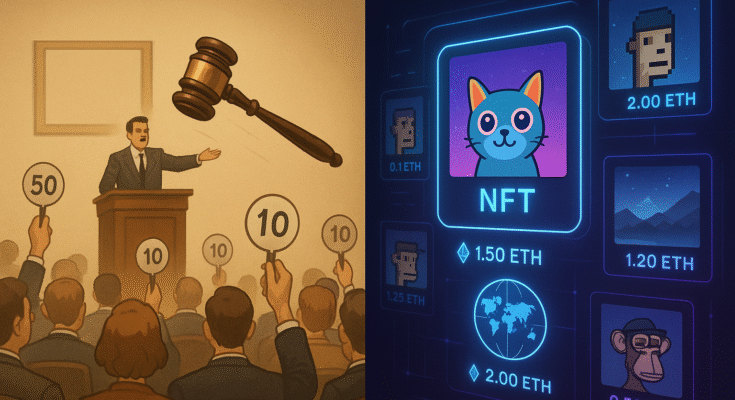Auctions: From Ancient Trade to Digital Revolution
Imagine a world where rare art, vintage cars, or even a celebrity’s lunch date can fetch millions—all thanks to the thrilling dance of bids and counterbids. Auctions, one of humanity’s oldest trading rituals, have evolved from crowded town squares to virtual global marketplaces, shaping economies and cultures along the way. Let’s explore their fascinating mechanics, hidden pitfalls, and how technology is rewriting the rules of this age-old game.
What Exactly Is an Auction?
At its core, an auction is a battle of wits and wallets. Sellers present an item, buyers compete with offers, and the highest bidder walks away victorious. Simple? Not quite. Behind the gavel’s bang lies a world of strategy, psychology, and cutting-edge tech.
Types of Auctions: A Playbook for Bidders
- English Auction
The classic showdown! Bids start low and climb higher as rivals spar openly. Think fast-paced art auctions or eBay’s adrenaline-fueled countdowns. - Dutch Auction
A high-stakes countdown. Prices drop steadily until someone snaps up the deal. Farmers’ flower markets and Google’s IPO famously used this model. - Sealed-Bid Auction
Poker meets economics. Bidders submit secret offers, and the top bid wins. Governments often use this for contracts to ensure fairness. - Reverse Auction
Buyers hold the power. Sellers undercut each other to offer the lowest price—common in corporate procurement and ride-sharing apps.
Why Auctions Rule the Market
- Fair Pricing: Let supply and demand decide. A rare Picasso? Millions. A quirky meme NFT? Let the crowd decide.
- Transparency: Open bids mean fewer backroom deals.
- Competition Fueled: Sellers maximize profits; buyers chase treasures.
- Versatility: From foreclosed homes to TikTok ad space—auctions do it all.
Digital Auctions: The Game-Changer
Gone are the days of paddle raises and smoky rooms. Online platforms like eBay, Sotheby’s Metaverse, and Christie’s now host global bidders 24/7. Blockchain and NFTs add layers of security and ownership tracking, while AI predicts bidding patterns. The result? A democratized marketplace where anyone can snag a Van Gogh… or a vintage Pokémon card.
The Dark Side: Auction Fraud Unmasked
Not all that glitters is gold. Scammers lurk in the shadows:
- Shill Bidding: Sellers use fake accounts to inflate prices.
- Bid Rigging: Colluding bidders stifle competition.
- Sniping Bots: Automated last-second bids that hijack fairness.
Fighting Back: Platforms now deploy AI fraud detection, identity verification, and real-time monitoring. Knowledge is power—learn the red flags!
Global Leaders in Digital Auctions
- USA: Pioneers with eBay and blockchain-backed art auctions. NFTs thrive here, turning digital art into million-dollar assets.
- China: Alibaba’s auctions dominate e-commerce, while courts sell seized assets online.
- UAE: Dubai’s property and luxury car auctions go digital, blending opulence with tech.
- Europe: Germany’s Lot-Tissimo and UK’s online estate sales lead with transparency and legal safeguards.
Challenges in the Digital Era
- Bot Wars: Automated bidders skew results.
- Privacy vs. Transparency: Balancing identity checks with user anonymity.
- Tech Gaps: Developing nations struggle to keep pace with digital tools.
The Future: Where Are Auctions Headed?
Picture holographic auctioneers, VR showrooms, and AI-driven pricing. As metaverse real estate sells for millions and influencers auction exclusive experiences, one thing’s clear: auctions aren’t just surviving—they’re thriving.


